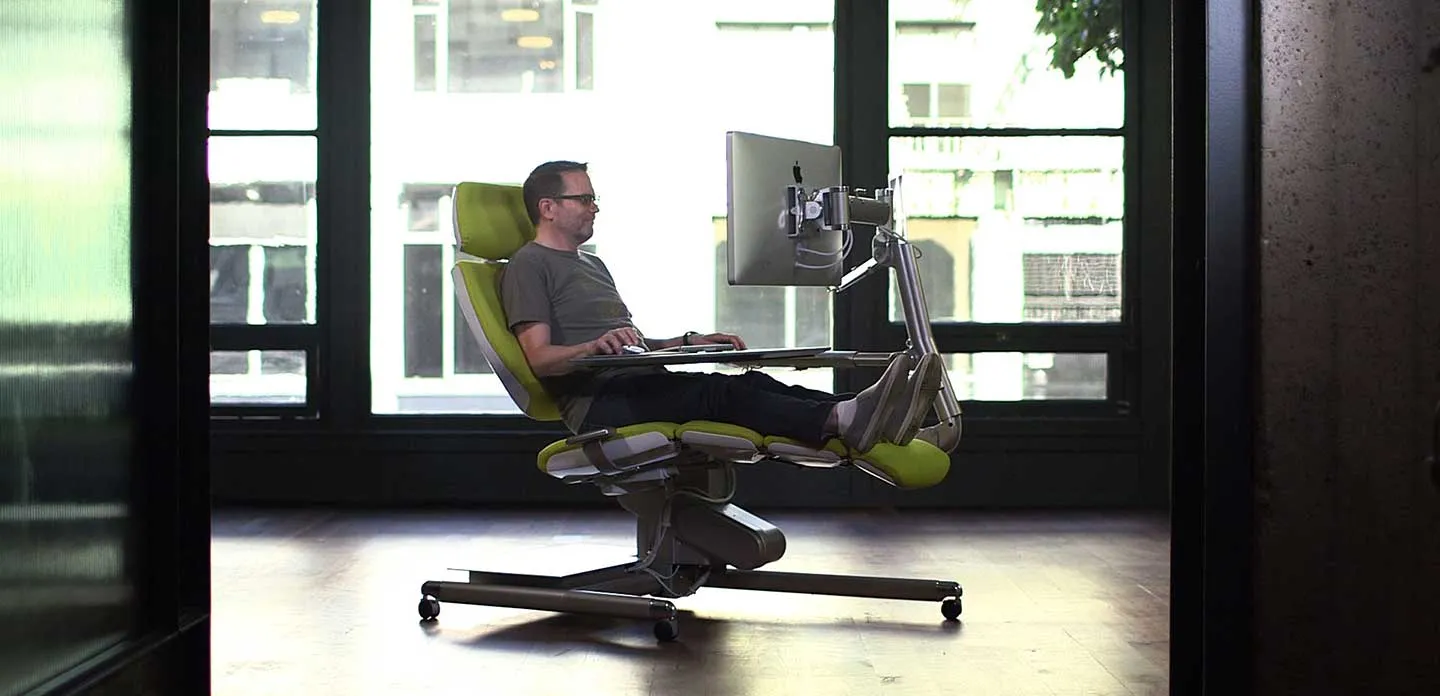A team of experienced technology professionals, who’ve worked on everything from building the world’s fastest recumbent bicycle to Burning Man art cars, founded Altwork to change the paradigm for high-intensity computer work areas. The group behind Altwork has founded and built successful companies, winning multiple patents in the process, because members of the group appreciate tackling difficult challenges.
Altwork’s founders had an epiphany about the traditional computer desk in 2010, long before studies began showing that sitting at a desk for extended periods is harmful to one’s long-term health. They realized that they could be much more productive and comfortable while working at their computers if they could easily change their posture— sitting, reclining, and standing — without the distraction of moving or repositioning the keyboard or computer screen.
The original idea for a workstation alternative evolved through many discussions and sketches. Ultimately — after numerous prototypes, late nights, and $3 million in angel/founder investment—the company introduced the Altwork Station: the first workstation that allows a computer to move with the body. The Altwork Station enables users to work at a computer while sitting, standing, collaborating, or in a zero gravity focus position—including a fully reclined option with the monitor directly above—at the press of a button.
While the passion, energy, and dedication of the founders played the largest roles in bringing the Altwork Station to fruition, the team also needed robust 3D design and visualization tools to make their dream work environment a reality, according to Chief Technology Officer John Speicher. “The Altwork Station is a unique blend of invention, mechanical engineering, biomechanics, ergonomics, and industrial design,” Speicher explains. “Getting the station to work with and follow the human body over a wide range of postures was challenging and would have been very difficult without the use of a 3D CAD system.”
Altwork’s founders have used various CAD packages in their work history and selected SOLIDWORKS 3D CAD software at the Sonoma Design Group, the company that preceded Altwork. “We knew that we needed a 3D parametric design system to complete development and learned that all of the industrial design, engineering, and manufacturing consultants with whom we wanted to work preferred SOLIDWORKS,” Speicher explains. “We now rely on SOLIDWORKS Standard design, SOLIDWORKS Professional design, and SOLIDWORKS PDM Professional software.”
DESIGNING AND CHECKING ASSEMBLIES
Using SOLIDWORKS software, Altwork designers were able to quickly design, check, and revise assemblies, moving development forward at a rapid pace. “Design starts with ideas sketched on paper,” Speicher explains. “We then choose the most promising idea and model it in SOLIDWORKS, with two to three designers involved with any particular assembly.”
“We then use SOLIDWORKS dynamic motion capabilities to make sure everything is moving correctly and that we don’t have any collision or clearance issues,” Speicher continues. “I used SOLIDWORKS to design and check the linkages and cams, and did the same when working with optical and actuator systems. And when we need to make changes, they are quick and easy because of the parametric nature of SOLIDWORKS —a change at the part level automatically updates associated parts in higher-level assemblies.”
